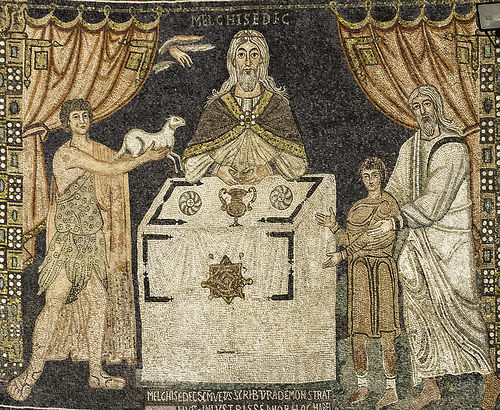We run our website the way we wished the whole internet worked: we provide high quality original content with no ads. We are funded solely by your direct support. Please consider supporting this project.

What’s the Purpose of the Old Testament Law?
Whereas the old covenant was rooted in the law, the new covenant is rooted in simple faith, such as Abraham had. Whereas the old covenant was forged with one particular nation, the new covenant is available to all who are willing to accept it, regardless of their ethnicity and nationality. Whereas forgiveness of sins within the old covenant was oriented around the repeated sacrifice of animals, in the new covenant God’s forgiveness is offered freely to all and is based on the once-and-for-all sacrifice of God’s own son. Whereas the old covenant motivated people with immediate blessings and curses, this new covenant motivates people by the love of God birthed in their heart through the indwelling Holy Spirit. And whereas the old covenant promised military victory over enemies, this new covenant promises ultimate victory for all who are willing to refuse all violence and instead love and serve their enemies.
If we accept that Jesus reveals what God has always been like, I submit that it is simply impossible to understand the new covenant he inaugurated to be an afterthought on God’s part—a sort of “Plan B,” as it were. The new covenant that was inaugurated by Jesus must rather reflect the way God has always wanted his people to view him, the way God has always wanted people to relate to him, and the way God has always wanted his people to live. This implies, however, that the failure of the old covenant cannot be understood to be an unintended contingent fact of history. But if Jesus reveals what God is really like, God’s decision to replace the old covenant with a new one cannot be understood along these lines.
This point is confirmed by the fact that the NT makes it abundantly clear that God from the start planned on having a “bride” who would be incorporated into his Son. And, at least from the time of the fall, it’s clear that God planned on Jesus giving his life to redeem this bride. This obviously entails that the Incarnation and Crucifixion, together with the new covenant they inaugurated, cannot be viewed as a “Plan B” that God would invoke only if the old covenant, his “Plan A,” failed. We must rather accept that the new covenant was God’s “Plan A” all along, which in turn implies that the failure of the old covenant that led to it was intended by God from the time he decided to enter into it, in response to Israel’s rebellion, on Mount Sinai. It means, in other words, that at least one of the purposes God had for entering into a law-oriented, nationalistic covenant that inevitably involved violence, and therefore one of the reasons he had for condescending to wear the mask of a law-oriented, nationalistic, violent warrior, was precisely to show that this kind of covenant cannot work.
We find a strong confirmation of the understanding of the old covenant as a negative object lesson in the fact that it’s failure was foretold even while it was being given (Deut. 28:37-56). In the midst of a broader narrative in which Moses is stipulating the blessings and curses of the Sinai covenant, he gives a prophecy that goes beyond merely warning people about what will happen if the people stray from the law, such as we find elsewhere. He rather states that God’s people will stray and describes the cursed consequences that will come upon them as a result.
Reflecting God’s displeasure over his people choosing a king in the future, this prophecy begins by announcing that when the Israelites disobey, “The LORD will drive you and the king you set over you to a nation unknown to you or your ancestors” (v. 37). It predicts that the land the Israelites were about to enter would be invaded and destroyed by a multitude of nations “from the end of the earth” and describes how they will be enslaved and mistreated (vss. 48-49, 52). It predicts that the Israelites will become “a thing of horror, a byword and an object of ridicule among all the peoples where the LORD will drive you” (vs. 38). And it ends by foretelling a multitude of horrific “curses” that will “pursue” the Israelites, including their being starved to the point of cannibalizing their own children (53-57). This passage clearly reveals that God forged this nationalistic, law-oriented, violent-prone covenant, with its stipulated blessings and curses, knowing it would not work. And, in light of the manner in which this failure prepared the way for the new covenant that Jesus inaugurated, I submit that this foreknown failure explains why God entered into it. He was embarking on a strategy of negative pedagogy.
Image by Lawrence OP via Flickr.
Category: General
Tags: Cruciform Theology, Law, Old Testament
Topics: Biblical Interpretation
Related Reading

What Kind of God Did Jesus Reveal?
The ReKnew Manifesto exists to encourage believers and skeptics alike to re-think things they thought they already knew – hence our name, Re-Knew. I am currently working through the theology of the Manifesto in a series of posts that began a couple of months ago. Over the last few posts, we have been looking at the…

The REAL Problem with Divine Violence in the OT
As I mentioned in my previous blog, while I will continue to offer video-blogs responding to questions that come in, I’m also planning on sprinkling in reflections based on my forthcoming book, Crucifixion of the Warrior God, over the next couple months. Today, I just want to state what I consider to be the real…

A Dialogue with Derek Flood Part 2: Is ALL of the Bible Inspired?
Image by TheRevSteve via Flickr Yesterday, I offered the first part of my response to Flood’s comments regarding my review of his book. Today I’ll finish up my thoughts. Scripture and Its Interpretation Flood confesses that he is confused as to how I can claim that “in the light of Christ, we must reject violent interpretations of Scripture”…

Podcast: Was Jesus’ Experience of Separation on the Cross a Hallucination or a False Belief?
Greg talks about the paradox of Trinity and Christ’s experience of separation on the cross. http://traffic.libsyn.com/askgregboyd/Episode_0349.mp3

Rachel Held Evans Interviews Greg on Benefit of the Doubt
We shared an interview that Frank Viola did with Greg yesterday, and we’re thrilled to share an interview that Rachel Held Evans posted today. Rachel is very familiar with the resistance and criticism that comes when dearly held beliefs are challenged. We feel like she is a kindred spirit in this regard. We hope you’ll…

How the Bible is Trustworthy
All of God’s communication in the Scriptures are covenantal in nature. Expressing his covenantal love and faithfulness, God stoops to “breath” Scripture as a means of bearing witness to his covenant relationship with Israel, and then with the Church. Ultimately God “breathed” (2 Tim 3:16) the Scriptures in order to bear witness to the One…
